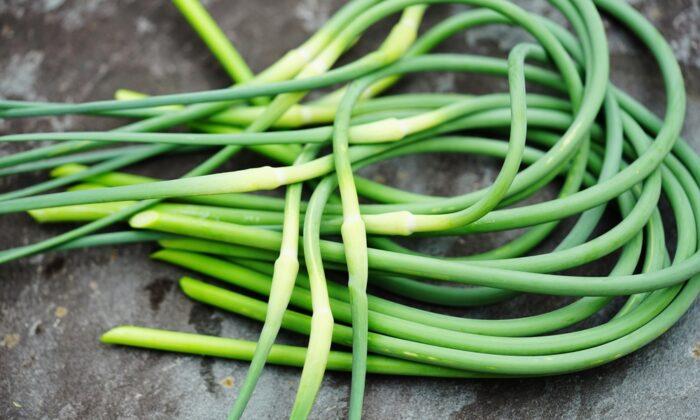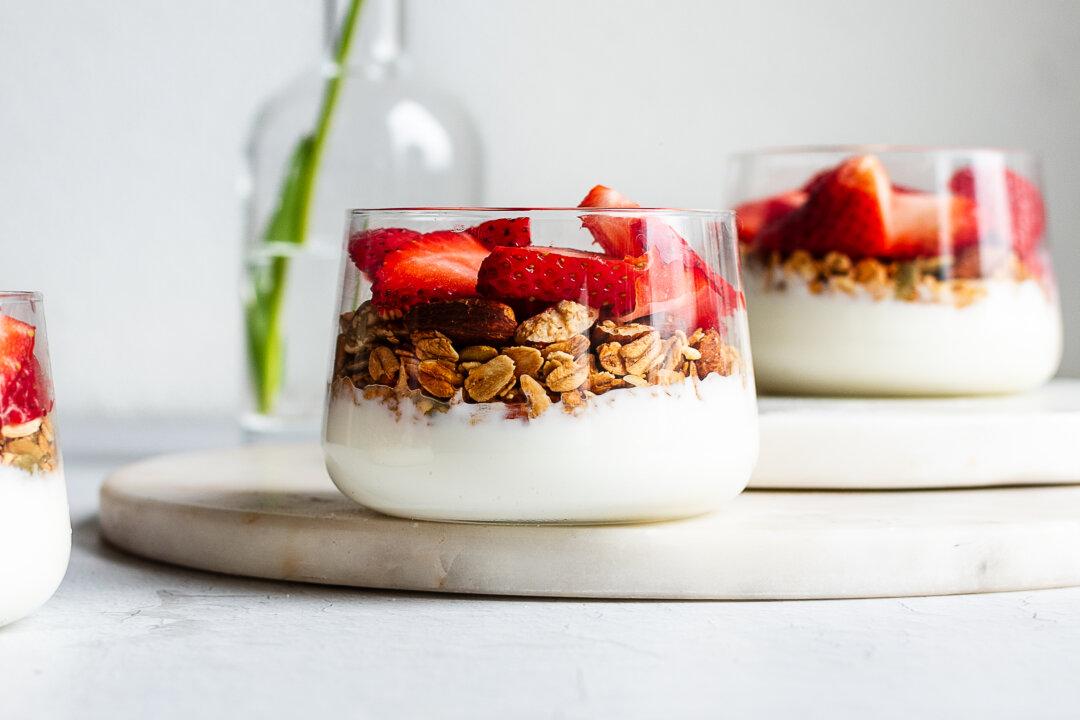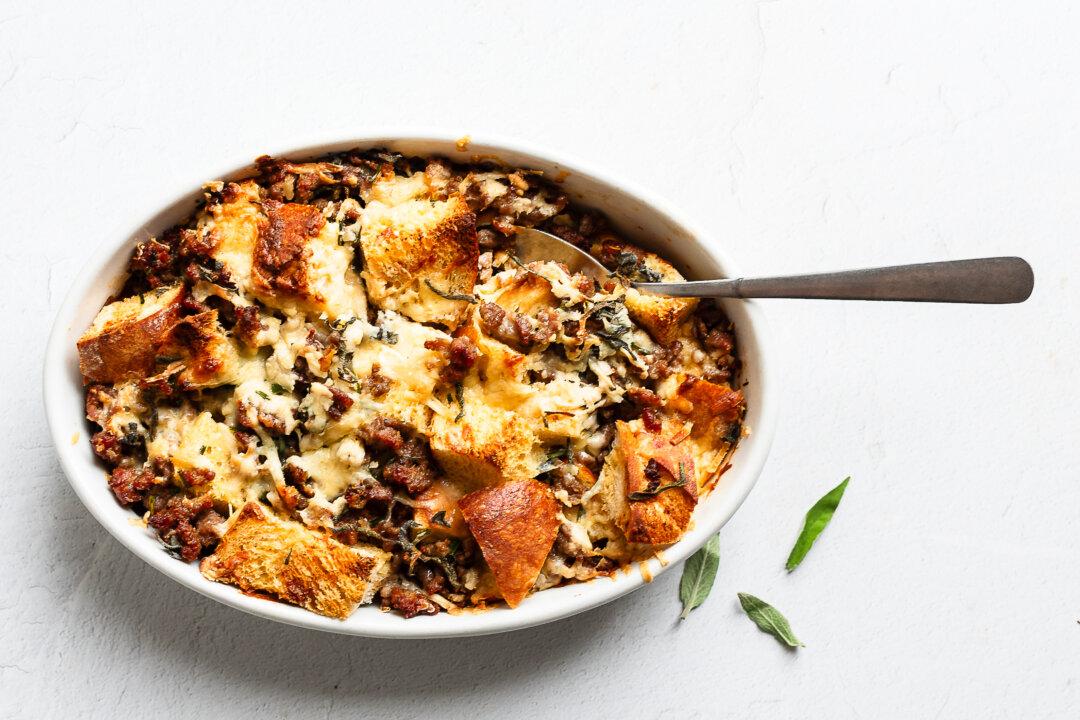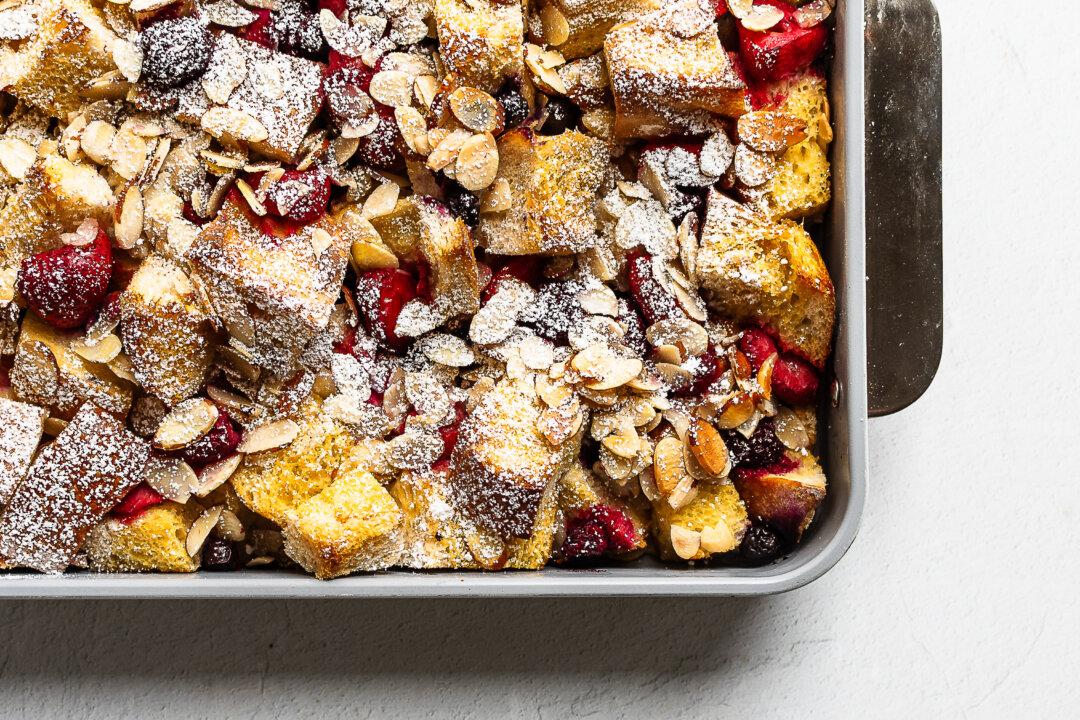In late spring, an enchanting botanical curiosity captures the attention of experienced gardeners and enthusiastic cooks alike. Slender green stalks emerge from the garlic bed, rocketing toward the sky in serpentine curls before forming a wedge-shaped, tapered bud. Known as a scape, it’s the bud of the hard-neck garlic plant, and its season lasts only a few short weeks. If you’re not paying attention, you might just miss it.
Traditionally, growers sow garlic in the fall, just as soon as summer’s heat gives way to autumn’s chill. The plant needs the cold, just as tulips, daffodils, and other spring-blooming bulbs do. Under a blanket of dank winter soil, garlic awakens from its dormancy. During the cold weather, it sets down spindly white roots. When spring arrives, the increased light, warmth, and rainfall tell the plant it’s time to sprout.
Like most flowering springtime plants, garlic wants to send all of its energy skyward toward a singular pompom of tiny, star-like, white blossoms. Yet its energy is finite. A garlic plant that flowers won’t have enough residual stores in its bulb to form plump, marketable cloves—the kind for which customers will pay a good price. With this knowledge, growers clip the stem before it can fully bloom. The resulting scape is not only edible, but also a favorite of chefs and home cooks.
The scape tastes like a cross between a scallion and garlic, only greener and brighter. Where there’s an aged sweetness to a fat clove of garlic, there’s a vibrant, fresh quality to the scape. You can use them in any recipe that calls for garlic. They taste delicious sauteed in olive oil for your favorite pasta dish, stir-fried with sesame oil and vegetables, or chopped fine and added to a zippy vinaigrette. They’re versatile, too. Consider tossing them on the grill, pureeing them with basil to make a vivid green pesto, or pickling them.
Garlic’s health benefits are well known, and the scape is no different. Like garlic cloves, the scape teems with antioxidants and other nourishing plant compounds. These phytonutrients calm inflammation and combat oxidative stress, one of the mechanisms behind many chronic illnesses such as cardiovascular disease and diabetes.
If you want to take advantage of garlic’s ample benefits and the scape’s short season, look for them at farmer’s markets in late spring. If you subscribe to a community-supported agriculture box, you also might find a few bunches of scapes tucked in among the springtime lettuces and herbs. Unlike the heads of garlic that you buy at the grocery store, which are cured so that they last for months, the scape is fresh and lasts only about a week in the fridge. So make plans to use it quickly.
While the entire scape is edible, the tip of the garlic bud can be fibrous and difficult to chew. If your scapes were harvested later in the season, the base of the stem also can be fibrous and tough. If that’s the case, snip the fibrous tip off the scape before you begin cooking, and chop off the base of the stem if it’s rigid rather than tender and flexible. Wrangling the curling scape takes a little culinary finesse and some decent knife skills, but you can slice it thin for sautéeing or, if you prefer, leave the entire thing whole and toss it on the grill or into the pickle pot.
Garlic scapes are fun to cook. There’s the charming, snake-like stem that curls onto itself. There’s the lively flavor and, of course, the opportunity to celebrate the changing seasons in your kitchen. Seasonal produce brings life to the kitchen and can reinvigorate a love of cooking. If good cooking and amazing flavor isn’t enough, remember that you might just benefit from all those potent antioxidants, too.

Brine-Pickled Garlic Scapes
Choose young, tender garlic scapes for this recipe. Within a few weeks, they'll give you a sharp, garlicky pickle that tastes best served on a charcuterie board, snack tray, or burger.In this recipe, you’ll pickle the scapes in a salt-water brine using the same fermentation technique as the one used for traditional sour pickles. If you do not have fermentation weights or a seal, prepare the pickles in a glass mason jar with a tight-fitting lid. Then, shake the jar daily and burp it to release pent-up gasses.
- 1 pound garlic scapes
- 2 tablespoons fine sea salt
- 4 cups water
Stir the salt into the water until dissolved, and set aside.
Arrange the scapes in the jar, and then cover them with brine. Weigh the scapes with a glass fermentation weight, and seal the jar. Allow the scapes to ferment at room temperature for 6 weeks. Transfer to the fridge when the scapes are sour enough for your liking, and consume within about 6 months.

Garlic Scape Pesto
This garlic scape pesto is an easy and delicious recipe for late spring and early summer. It’s my favorite way to preserve garlic scapes and an excellent recipe for true garlic lovers.- 12 medium garlic scapes (trimmed and chopped into 1-inch pieces)
- 1 cup chopped fresh basil (loosely packed)
- 1/2 cup chopped flat-leaf parsley (loosely packed)
- 1/2 cup grated parmesan cheese
- 1/4 cup pine nuts
- 1/2 teaspoon fine sea salt
- 3/4 cup extra virgin olive oil
With the food processor set to low, add the olive oil in a smooth and steady stream until fully incorporated into the pesto.
Spoon the pesto into a bowl, and adjust consistency with additional olive oil, if necessary. Enjoy right away or store in an airtight container in the fridge for up to 1 week.




